FMB tyres: the go-to rubber for Paris-Roubaix
Handmade using the highest quality materials and the pinnacle of technology, FMB tyres are the go-to rubber for many pros tackling the cobbled Classics. Last year, we went to Brittany to uncover the brand’s success
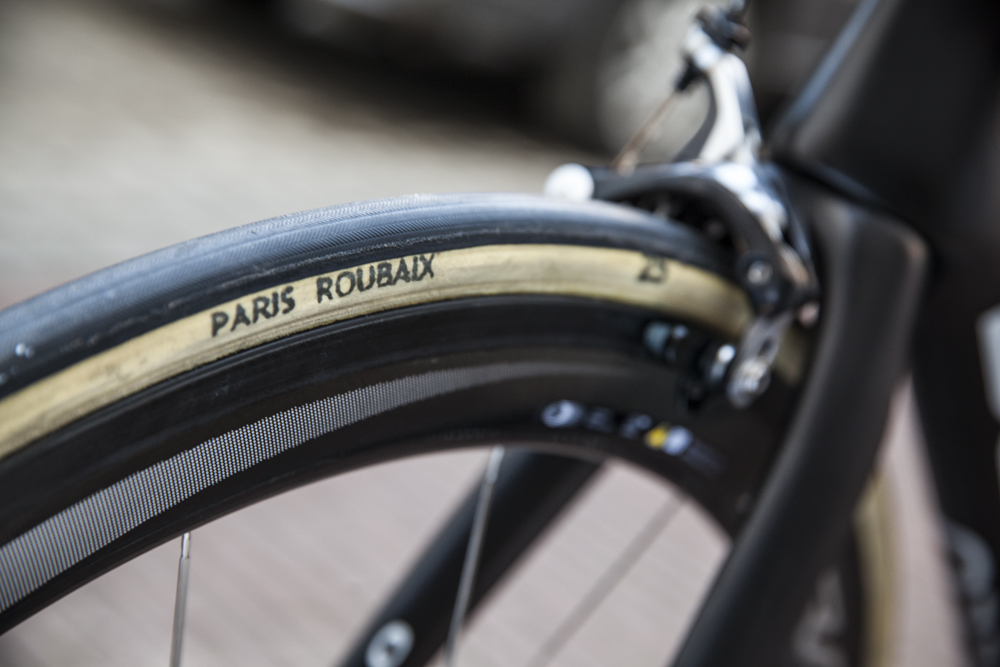
April 13, 2008 - Tom Boonen floats into the calm haven of the grass infield at the Roubaix Velodrome after nearly seven hours riding through a storm of cobblestones to take his second victory in Paris-Roubaix.
On his wheels is a set of FMB tyres, making its debut in the pro peloton. There is no tougher test of rider or equipment than the Hell of the North, and FMB had passed its first ‘trial by cobbles’ with flying colours.
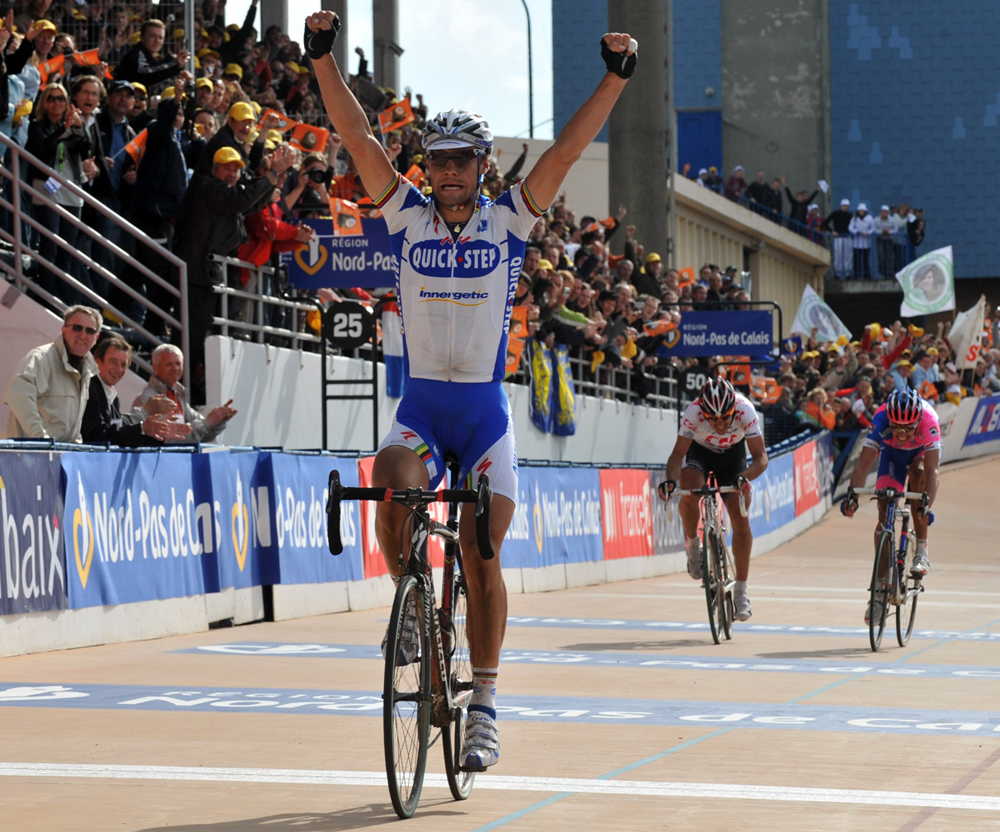
Yet three years earlier FMB was just a man with an idea. What is even more remarkable is that now, 11 years on from the first tyre to have FMB stamped in black ink on the sidewall, a
tiny company of just five people is holding its own among the corporate giants of the bike industry, making equipment that remains the professionals’ choice for the most demanding races on the calendar.
>>> 10 ways the pros modify their bikes for the cobbles
What makes FMB tyres so good? And how do they manage to do it?
Winning start
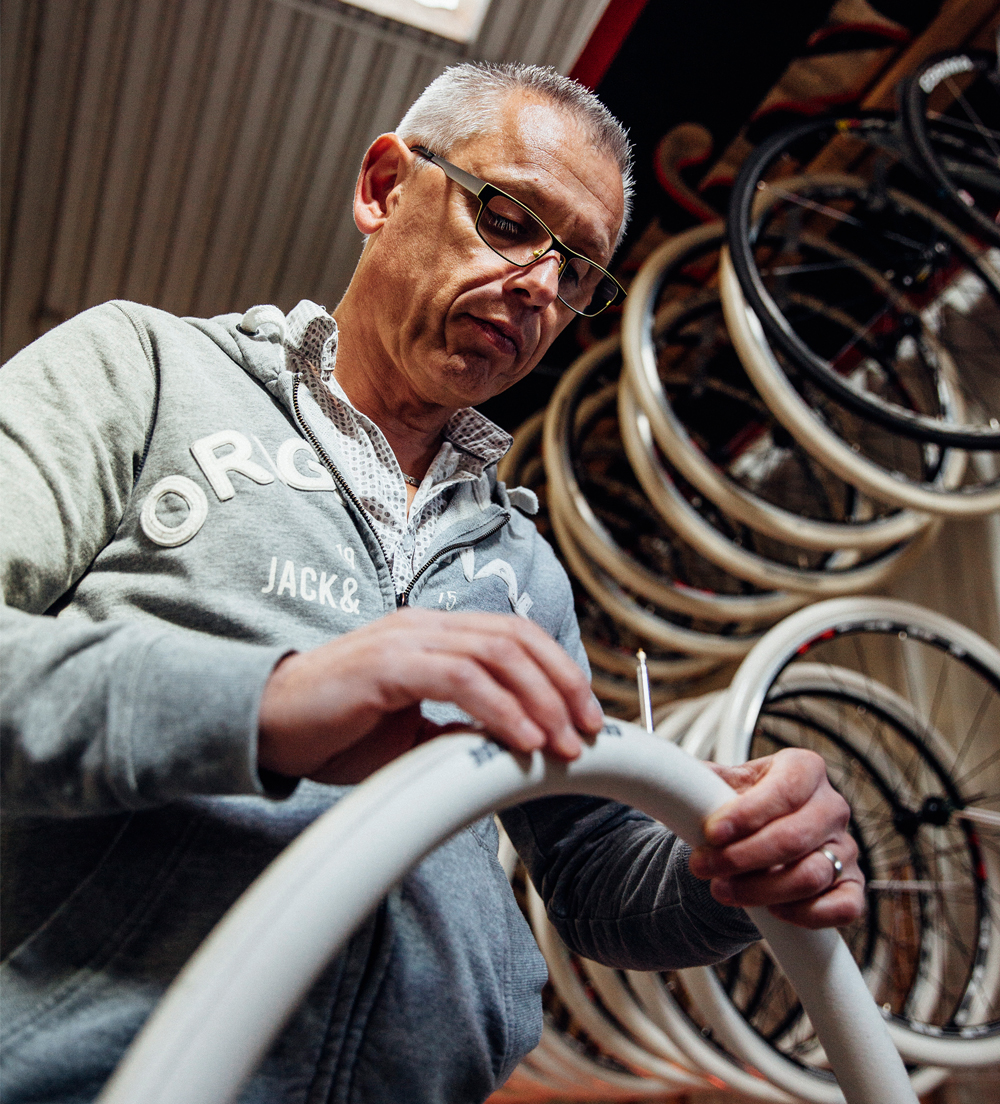
The story begins in a bike shop in Jabbeke, a small town near Bruges, Belgium, in the winter of 2007. Kurt Roose, a mechanic with Quick Step-Innergetic (now known as Etixx-Quick Step) picked up a new set of cyclo-cross tubulars for him and his son to race on over the off-season. A staff pick, they had FMB written on the sidewall.
The latest race content, interviews, features, reviews and expert buying guides, direct to your inbox!
>>> Paris-Roubaix live TV guide
“We realised the product was very good,” Roose says. “So we asked the guy if he could make FMB tyres for Tom [Boonen], and we used them that year in Paris-Roubaix, which Tom won.”
That ‘guy’ is François Marie; FMB stands for François Marie Boyaux, and boyaux is French for tubular. It’s a word that means the best-performing tyres: exquisite, buoyant cushions of air for your ride. The French also have a way of naming lesser, inferior tyres — pneus — pronounced ‘puhneuhs.’
Get the lowdown on Paris-Roubaix
When we arrive to meet Marie, our expectations are of a rotund old-timer with gnarled fingertips, a packet of Gauloises cigarettes in his top pocket and a day’s stubble on his chin, myopic from hours of stitching by fluorescent light in a dank, grubby factory.
What we actually get is a former civil servant in a crisp shirt and designer spectacles — black with tan rims, just like his tyres, a similarity he assures us is entirely coincidental. His premises are clean, bright and airy. He’s even wearing desert boots.
Test your knowledge of Paris-Roubaix
“I wanted a change of career, and was lucky to have been able to see how the best tyres were made from someone who used to make tyres in France,” Marie says.
“I used to race bikes when I was about 20 years old, and I used to go over to his workshop to buy my tyres from him and I would stay to watch him make them.”
Learning the trade
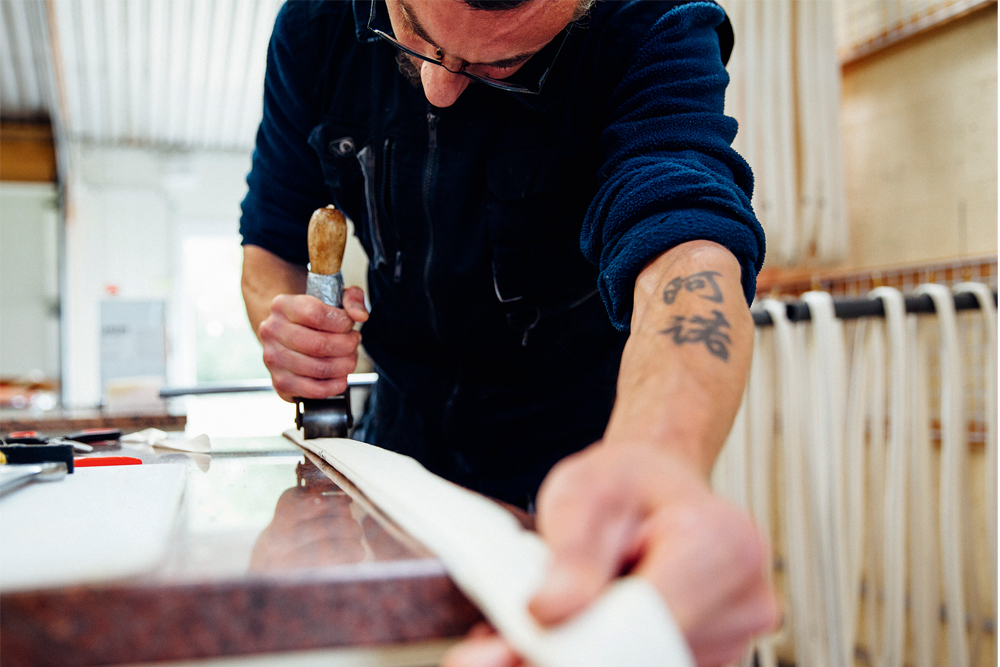
That inspiration was André Dugast, still one of the biggest brands in tubular production although Monsieur Dugast, now in his eighties, has since sold the name and rights to a Dutch company and production has moved to the Netherlands and Eastern Europe.
Marie remains the most hands-on producer of bicycle tyres. He doesn’t run a factory, rather a workshop in a tiny rectangular building plonked in a field in Brittany, 30 minutes outside St Malo, which he shares with a company that makes enormous custom cinema posters.
>>> Peter Sagan has the edge over Fabian Cancellara in Paris-Roubaix, says Stephen Roche
“We do nothing by machine,” explains Marie. “What we are doing is couture.”
“Making a tubular tyre takes between 60 to 75 different steps; making the cloth, cutting it down to size, folding it over, putting the glue on it, putting the tread on it, sewing the valve on it. It’s all done by hand.
“It’s like haute couture. There’s a need for really high quality stuff, and there’s a need for lower quality stuff too, so that everybody can buy it. We make the stuff that is top of the range.”
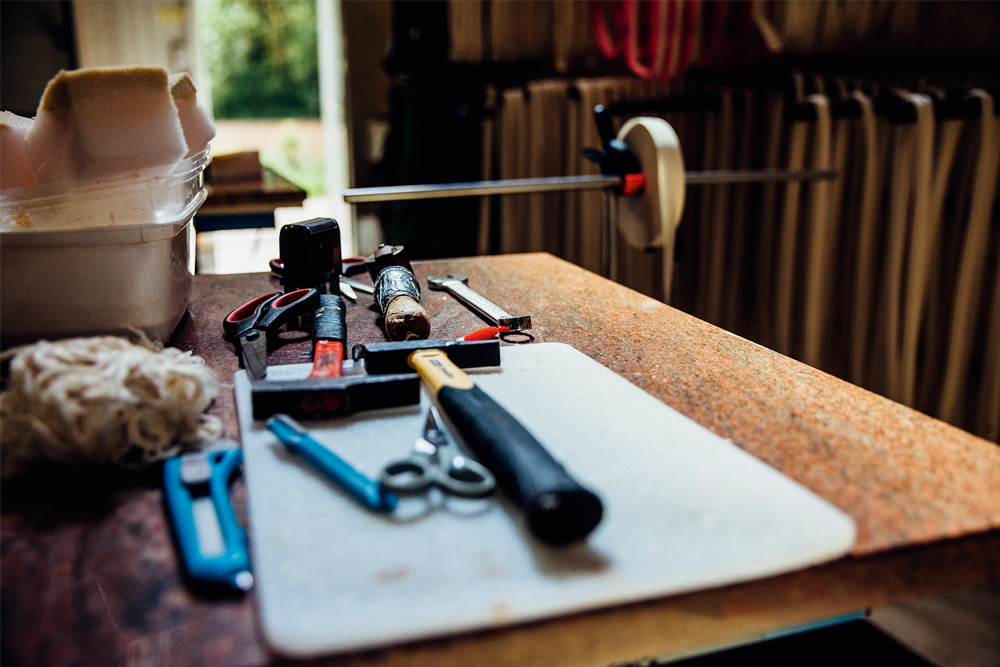
Beginning with little more than a spool of thread, FMB makes between 4,000-5,000 tyres per year, around a third of which go straight to the professional teams and riders.
>>> The 14 best cobbled climbs in the UK
They are the absolute pinnacle of tubular technology; to buy a pair will set you back more than €200. David Millar personally ordered a pair of silk FMBs for the final stage time trial of the 2009 Giro d’Italia. He won it.
“To ride with a silk tubular is an absolute pleasure,” Marie says. “It’s like rolling first-class in a Pullman."
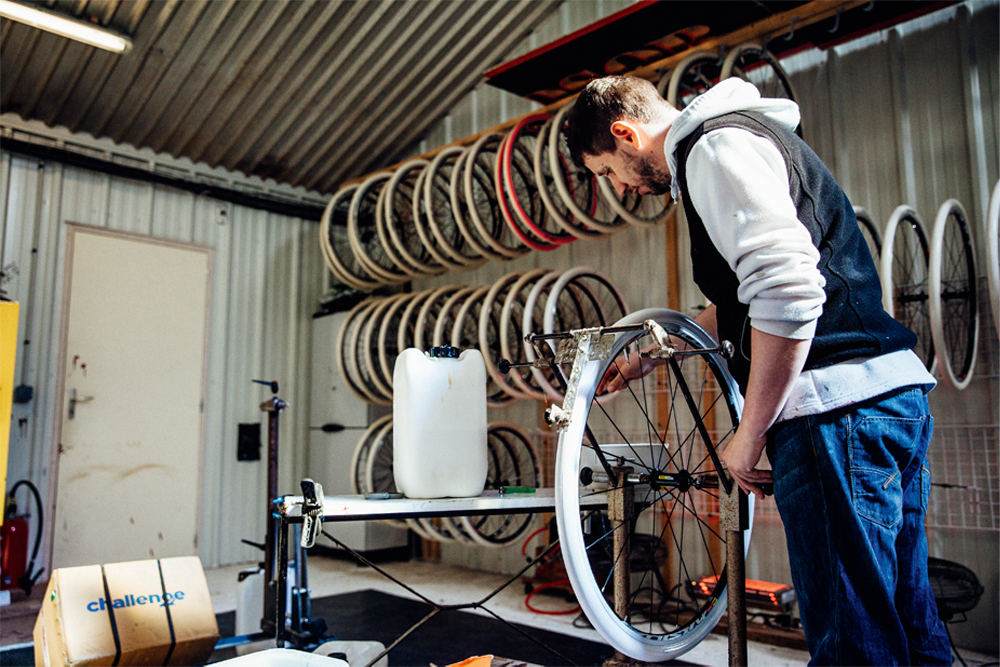
Getting better with age?
We’ve all heard the advice: age your tubulars in a dark cellar for a good few months before sticking them on your bike. But is it gospel truth or an old wives’ tale?
“In theory, that’s true,” says François Marie. “There are always solvents in the glue which continue to evaporate over time.”
>>> Pro Bike: Francesco Moser’s 1979 Paris-Roubaix De Rosa
That evaporation hardens the glues and rubbers, making the tubulars more resistant to debris and punctures.
It’s a concern if you’re a clubman out in the winter, less so if you’re a professional being followed by a support vehicle.
>>> Icons of cycling: La Trouée d’Arenberg, Paris-Roubaix’s toughest cobbles
“But it’s more a myth than reality,” Marie adds. “It doesn’t make much difference to pro riders, who are more bothered about performance than they are about a tyre that will last for another 300km.
“Our Paris-Roubaix tyres are ready three weeks before the race, and then they are used.”
Cut for cobbles

“There’s a real difference, using those tyres,” Juan Antonio Flecha, a former Classics specialist who retired at the end of 2014, explains.
“They are handmade, the way they roll, the feel they have — especially on the cobblestones but also on normal roads — it’s so nice.
>>> 12 pictures that show just how tough the Paris-Roubaix cobbles are
“They feel smoother and it’s more direct. It’s like if you ever try clinchers and you try tubulars, you feel the improvement, and riding FMBs is again another step. Especially when you’re cornering.”
“The secret is the carcass, the casing,” says Marie. “Above all, it’s much more comfortable. And after six hours on the bike, the rider hurts everywhere, his back, his shoulders, his wrists, his hands… but with comfortable tyres he gets to the finish much fresher, right at the moment when he needs to be strong.”
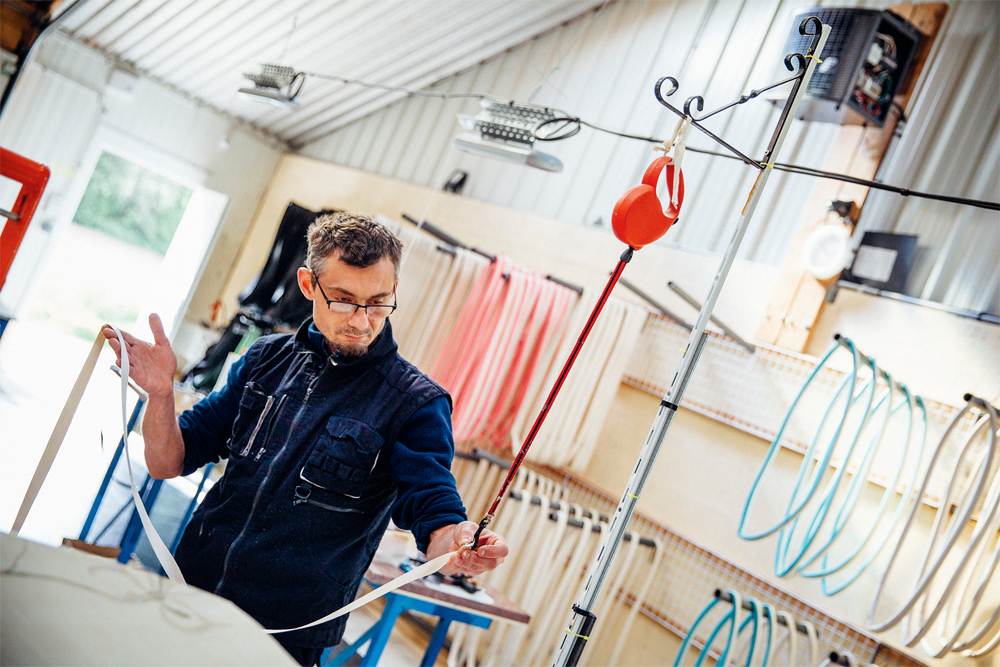
Polyester is used to make many mass-produced tyres but it is far from the ideal material. Cotton is much more supple (it corners better), tougher (it resists punctures) and less stretchy (it reduces rolling resistance).
>>> John Degenkolb hopes to learn from watching Classics on TV ahead of May return
Silk is even better, if a little more fragile. But they don’t come cheap, and not even professional teams can afford first-class tickets all the time.
Each FMB tubular takes one and a half hours to produce and goes through just four pairs of hands from beginning to end; those belonging to Annie, Renaud (François Marie’s son), Arnaud and Marie-Cecile.
FMB tubulars remain the tyre of choice for only the most special — and most demanding — of races.
Tom Boonen on FMB
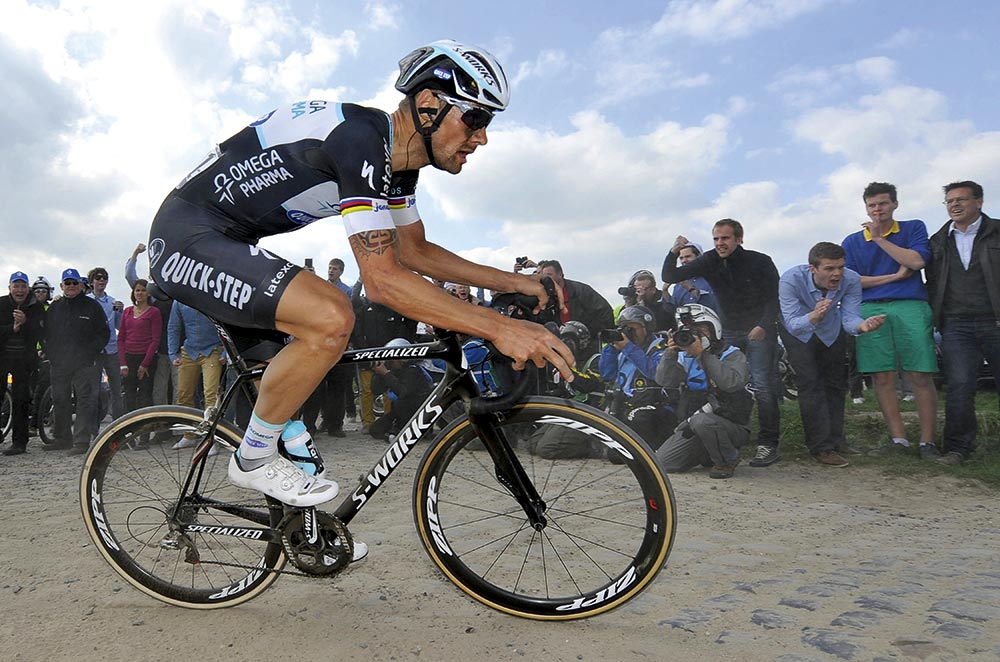
The Classics legend talks about how tyres for Paris-Roubaix have changed during his career
“The evolution of the tyres in the last six or seven years has been very fast. I even did my first Paris-Roubaix [in 2002] on normal Hutchinsons, 23mm. They just didn’t make anything else. We’ve used Hutchinson, Dugast, FMB, Vittoria… you name it, we tried it. The FMBs are one of the best.
>>> Tom Boonen: ‘Winning fifth Paris-Roubaix is the only reason I’m still racing’ (video)
“In the beginning we had to start with 1.5 or 1.6 bar more pressure than we wanted to finish with because the tubulars were letting out air. They were so soft, they made them with real silk, and they lost a lot of pressure during a seven-hour race.
“These days they treat the carcass with a special rubber compound; it makes them maybe five per cent less flexible but you have to really, really know your tyres to feel that. I still like to ride without it [the rubber treatment]; it’s less protective but it gives you just that little extra edge.
>>> The Koppenberg and the defining cobbles, bergs and climbs of the Belgian Classics
“FMB is a really small company. With Specialized now we have the opportunity to have a decent lab testing and measuring equipment on the bikes, so we can see the difference. In the past we could only say, ‘This is the best one,’ but you couldn’t see the difference. Now you can really see that different pressures are five watts better or 12 watts better, and so you can play with the pressure a little bit.”
Mainstream collaboration
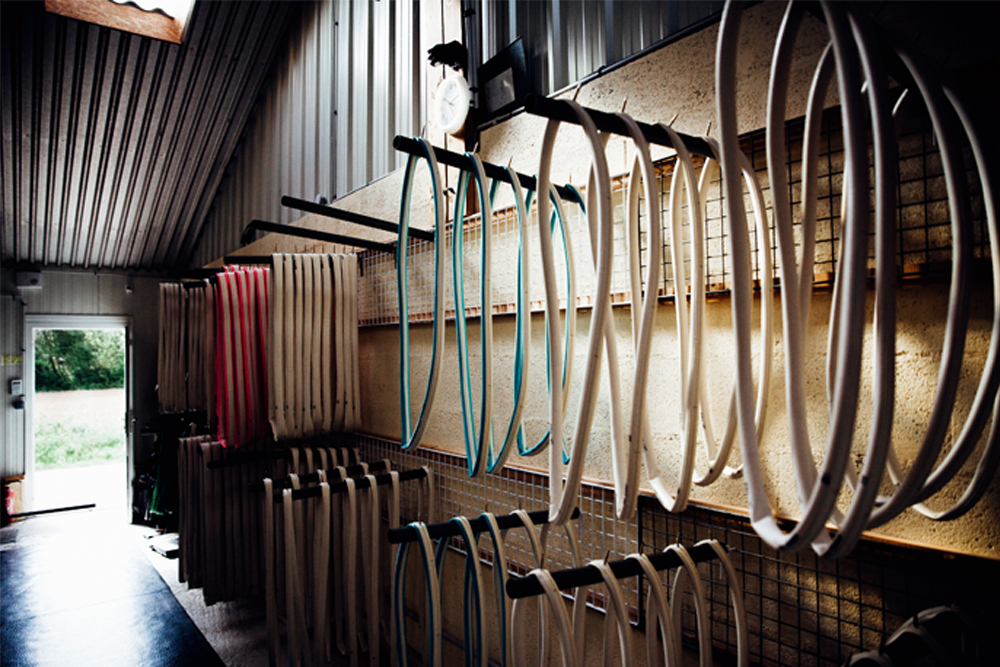
While Marie shows us around his workshop, he asks us not to photograph certain bits of equipment which might provide an insight into the company’s precise methods of production. At one point, he lifts a notepad from a pile of books on his desk.
Underneath are some stickers from a well-known tyre brand for whom he has made and badged-up tyres in the past. He puts the notepad back down on the pile. Some teams and tyre sponsors, it seems, will go to quite some lengths to make it look like their riders aren’t riding FMBs.
>>> David Millar calls for investigations to determine cause of motorbike incidents
Even when riders order tyres themselves they’re not always allowed to ride them; Sylvain Chavanel must still have a pair of TT tubulars that he ordered for the 2014 World Championships but wasn’t permitted to ride. Sponsors often prefer riders to show off the cheaper equipment, more likely to be bought by the average cycling consumer.
FMB exists in symbiosis with the mainstream bike industry. Large brands both recognise the prestige of the FMB product and appreciate that they cannot compete when it comes to either quality and flexibility; FMB is able to make any tyre to order at a few days’ notice, with any size chamber or tread that the customer might want.
Sean Kelly knows how to ride cobbles
So, rather than trying to force them out of their little niche in the market, the big brands work with them. Specialized now tests FMB tyres in its labs, combining expertise; any rider or team on a Specialized bike during the cobbled Classics is equipped with FMB tyres with Specialized-manufactured tread. The cost of the tyres is met by the Americans.
Yet, in many ways, Marie remains very much at the helm of his own little ship. “We stole them all,” he jokes when we ask him how he got hold of the fleet of Mavic wheels the company uses to mould and work on the tubulars.
“Hah, of course we bought them,” he adds. “We sell tyres, and Mavic sell wheels.”
>>> Road bike wheels buyer’s guide (videos)
In an age where bikes are big business, it’s comforting to know that small, artisan companies like FMB can still exist and cut it in the hyper-technical world of professional equipment.
An anachronism in some ways yet bang up to date in others, FMB’s success story happily proves that handmade products still have a place at the top of cycling. Well, sometimes the old ways are just the best.
The original version of this article appeared in the August 2015 edition of Cycle Sport
Richard Abraham is an award-winning writer, based in New Zealand. He has reported from major sporting events including the Tour de France and Olympic Games, and is also a part-time travel guide who has delivered luxury cycle tours and events across Europe. In 2019 he was awarded Writer of the Year at the PPA Awards.